Looking to add smart home functionality without breaking the bank? The Kasa smart switch is a brilliant solution.
Our editors and experts handpick every product we feature. We may earn a commission from your purchases.Learn more.
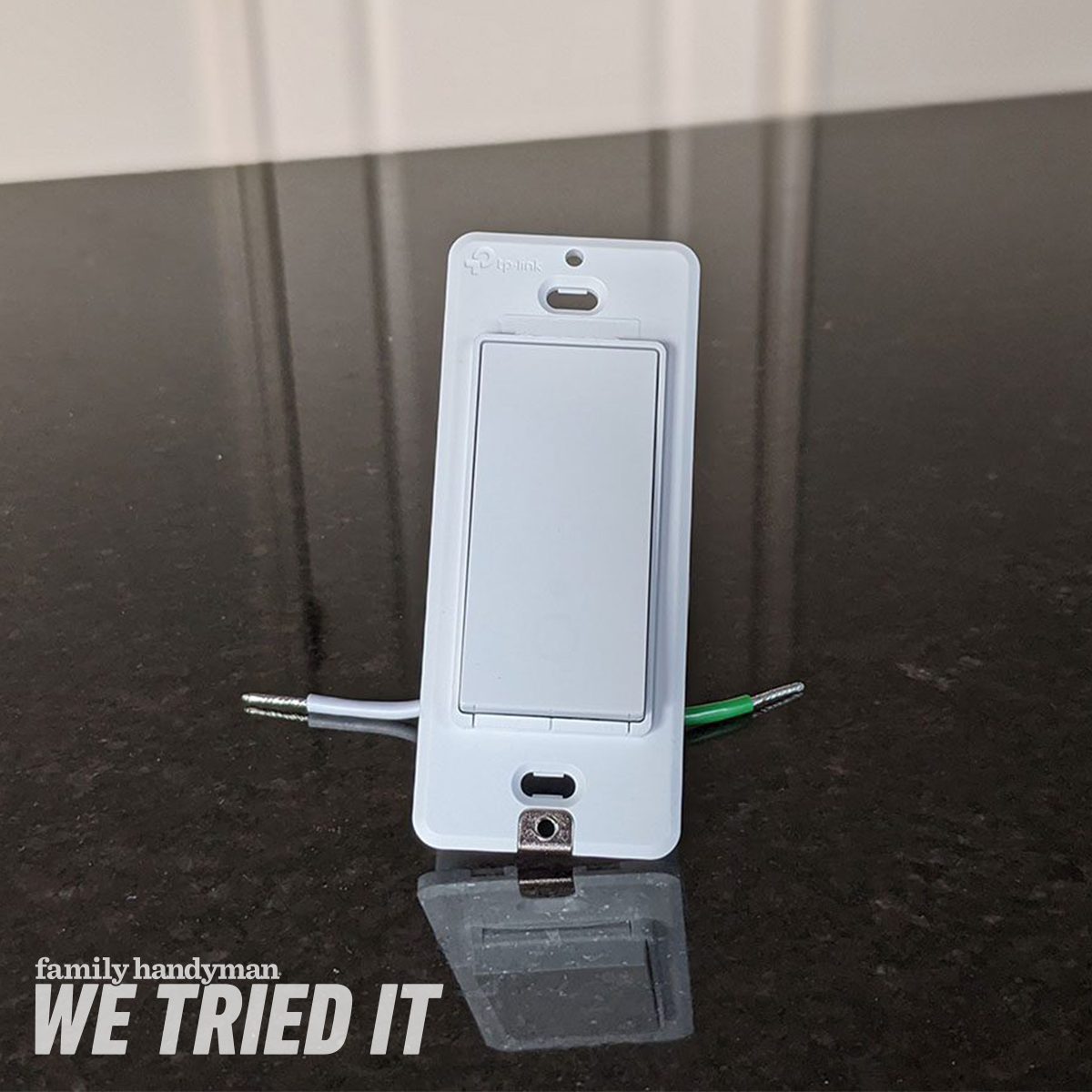

Looking to add smart home functionality without breaking the bank? The Kasa smart switch is a brilliant solution.
Our editors and experts handpick every product we feature. We may earn a commission from your purchases.Learn more.
Admittedly, I’m a tech nerd. I love tweaking settings on my router, adding new functionality to old gaming systems and, of course, embracing all things smart home. When I heard that controlling lights with your voice or phone came into vogue, I jumped on the bandwagon.
I started out with smart plugs, trying different brands until I landed on the Kasa line by hardware manufacturer TP-Link. Other brands had wonky integration with Google Assistant (sorry, Alexa lovers), and didn’t work as well as I had hoped. With the Kasa line, everything works as it should and integration is easy. After graduating from the smart plug world, I upped my game by delving into smart switches, so here’s my experience testing the Kasa smart switch.
On This Page
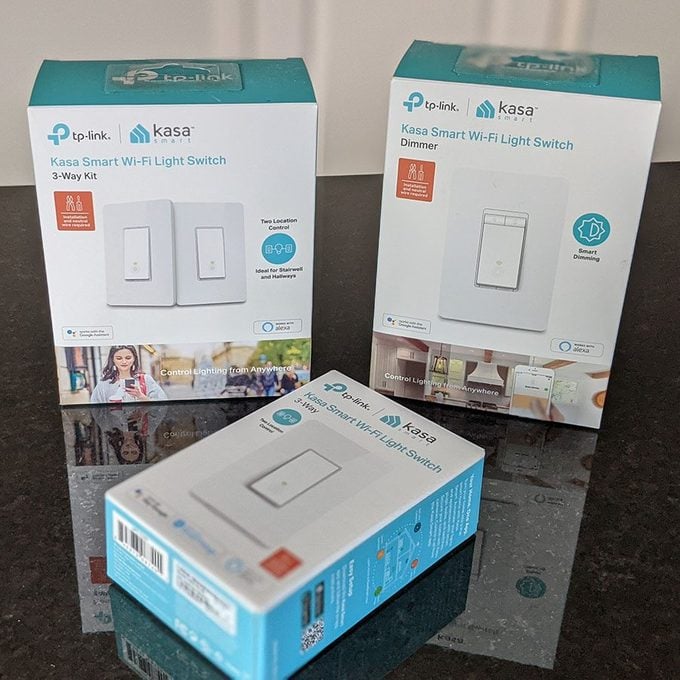
Smart switches are essentially light switches that connect to your home Wi-Fi network, allowing you to operate them from anywhere via voice commands or an app on your phone. Each Kasa smart switch is made by TP-Link, a company known for its routers, modems and other home networking devices. The Kasa line also has smart light bulbs, security cameras and smart plugs.
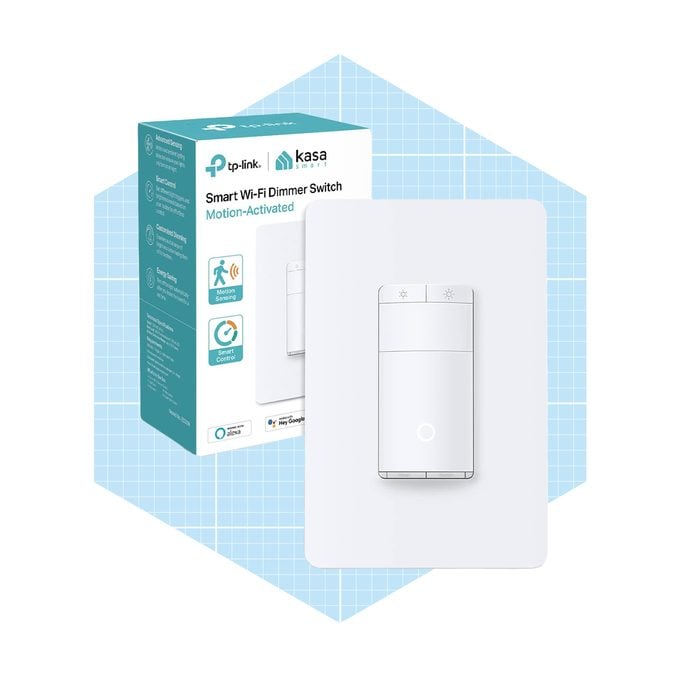 VIA MERCHANT
VIA MERCHANT
Meet the Kasa smart switch, a motion-sensored light switch with dimming capabilities that you can control from your phone.
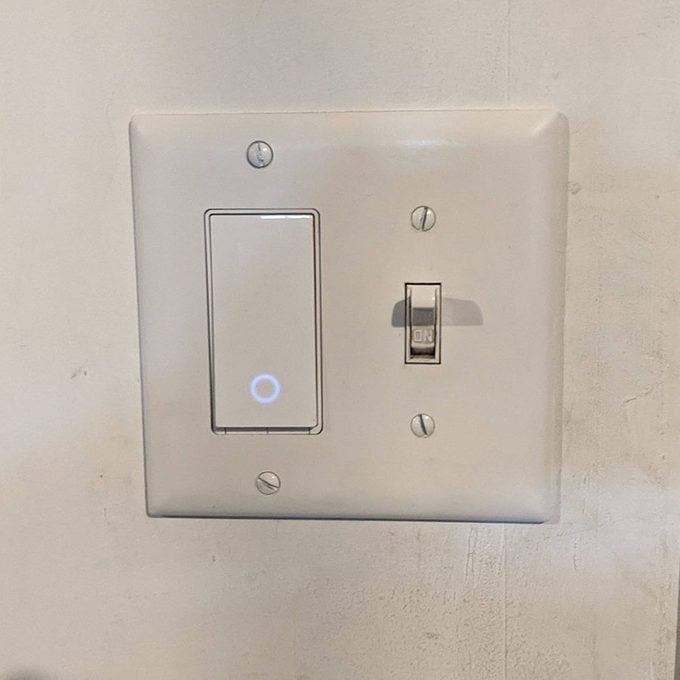
Kasa’s smart switch lineup consists of three models: The HS200 is your basic, regular light switch; the HS210 is made to replace a three-way switch; and the HS220 is a regular switch that offers dimmer controls. I tested the HS210 and the HS220.
Controlling Kasa devices is done through the Kasa app, available for download in the Google Play Store (I’m an Android user) and the Apple App Store. They can also be voice controlled with Google Home, Amazon Alexa and Microsoft Cortana, as well as IFTT, Nest and more. The app is streamlined and offers a nice user experience for Kasa smart switch owners. All of your devices show up on the main page in a group with other Kasa products (smart plugs, smart switches, bulbs and more). If you have TP-Link cameras, you can control them here, too.
Once connected, use the app to set up routines—having certain products come on in the morning and go off at night, for instance. For further functionality you can set up integrations with other smart products.
The Kasa smart switch comes in a decora (rocker) style, not the traditional toggle style. The rest of the switches in my home are toggle style, so I’d love to see them roll this option out eventually.
Installing the smart switches is just like installing any regular light switch. However, I’m no electrician, so it took a little fiddling to get them to work properly. It was fairly straightforward and easy enough for the average user, though.
Since I already had the Kasa app on my phone, I launched it to learn the installation steps. From the main screen, tap the + sign in the upper-right corner. Kasa asks if you’re adding a new device or setting up a group to control multiple devices simultaneously. I chose device. Next, pick the type of device. In this case “Smart Switches.” Then, the type of switch. I chose “Smart Three-Way Switch” and “Smart Dimmer” for the other install.
Here’s where the install instructions really begin. The app asks if you’ve already installed the device. If you click “Not Yet,” it walks you through the basic wiring process, with a bold warning: “If you are unfamiliar with basic electrical wiring, please consult an electrician.” Noted!
The app prompts you to test your Wi-Fi strength (to connect the device to your network), and tells you what tools you’ll need for the project—in this case, a couple of screwdrivers, pliers and a continuity tester, which I don’t think I used. From there, the app gives a basic rundown of three-way switches and asks you to enter the number and color of the wires you’re working with. After entering the information, the app—with really nice renderings—guides you through how to remove the old switch and replace it with the new one. It prompts you to take pictures and label wires along the way.
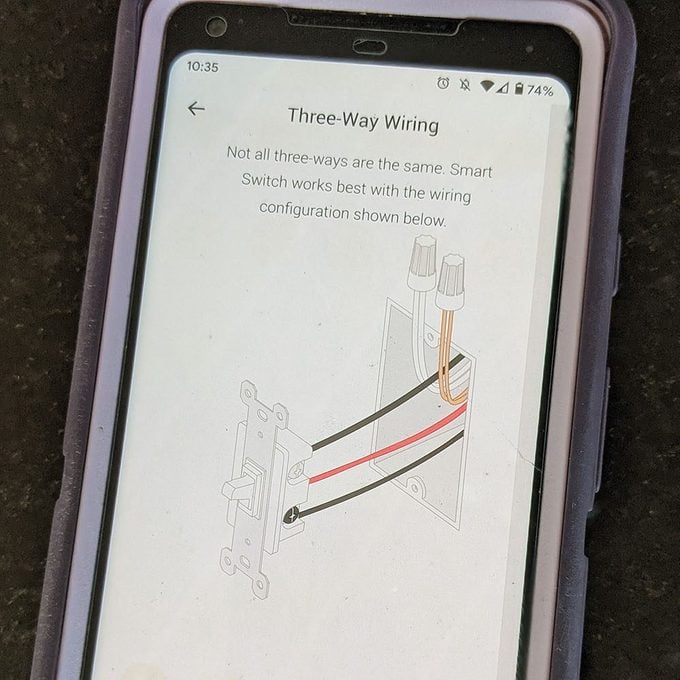
For the most part, this is all straightforward. I had some minor blunders along the way. But that’s just how any home DIY project goes. I had trouble installing the dimmer switch, not because of the product itself, but because of the wires I had in my box. My particular set has a single dimmer along with a three-way switch. There was an extra wire in my configuration that didn’t match what I found in the Kasa app. In the end, I grouped it with a bundle of same-color wires and everything worked perfectly.
I had to connect the switches to my Wi-Fi network. Again, the app walked me through the process. These switches operate on the 2.4 gigahertz (GHz) band on your router, like most smart home devices. Following the app’s instructions, setup was simple. The switch uses your phone to piggyback onto the home’s Wi-Fi network during setup. Then, it communicates directly with your router.
After the Kasa smart switch is configured, you can turn it on and off with the app. When you push the app button to the corresponding switch (or smart plug), the device turns on instantly. There’s no lag time between touching the phone screen and the device activating, which is pretty cool.
During setup, you can name your app. Choose monikers like “outside lights,” “hallway lights,” “toy room,” etc. You can also change these later within the app. There are little icons to assign to each device, representing what it controls to streamline the appearance and function.
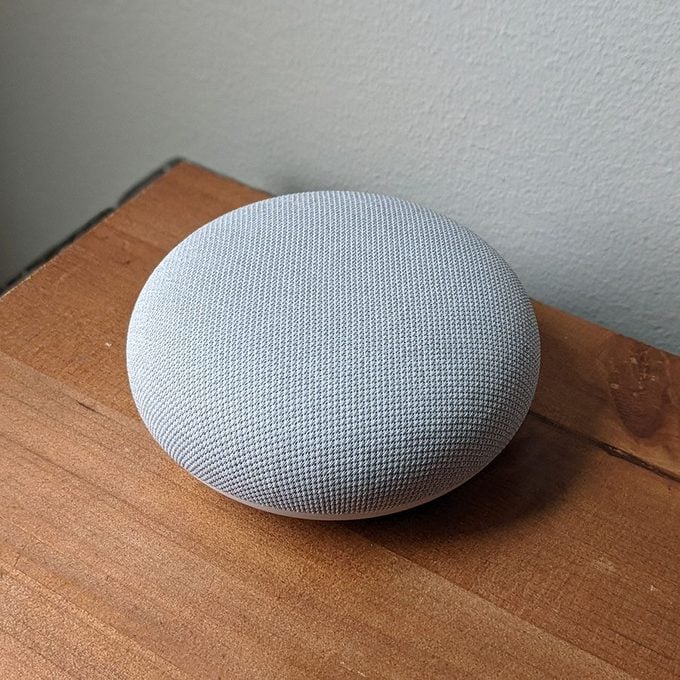
Depending on which smart home ecosystem you have, connecting the Kasa hardware is really a snap. I’m a Google Home and Assistant user. That made it easy for the Google Home app to automatically find the connected switches and place them on the main screen. From there, I just had to move them to the correct room and set up any groups I wanted. Amazon’s Alexa is similar, which makes setting up the Kasa smart switch with any other smart accent lighting a breeze.
To access the voice control features, you need Google Home-, Amazon Alexa- or Microsoft Cortana-equipped speakers or other devices. My home already had several Google Home speakers to test out. Once connected, it allows you to use voice commands like, “OK, Google, turn on the outside lights,” or “OK, Google, dim the basement lights.”
Eventually, the switch in my garage that controls our outside lights stopped connecting to our Wi-Fi network. It isn’t far from the router, so I didn’t believe that was the issue. Then I thought it might be this: Our dual-band Wi-Fi mesh router broadcasts the 2.4 GHz and 5 GHz bands simultaneously under a single SSID (the name you see when connected to your network). Kasa switches use the 2.4 GHz band. To connect to the network, the switch piggybacks onto my phone, before connecting directly with the router. My phone defaults to the 5 GHz band, so that could be the issue.
From over 2,500 ratings on Amazon, the Kasa smart switch has earned an average of 4.5 out of five stars. Here’s what people are saying:
“We swapped out a regular light switch for this one in our main bedroom, which is on the larger side and being lazy during TV time at night, we didn’t want to get up to turn on/off the light,” shares Mike, a five-star reviewer. “This inexpensive upgrade did the trick. I didn’t realize at the time that this also has motion detection if you want, so we set the motion to turn on lights between 9 p.m. to 11 p.m. when we enter the room. Just a cool feature that you can program or not.”
Marcy Thompson, a verified purchaser, says, “We have used Kasa for several light switches in order to control and schedule some exterior lights, and now we have chosen to use these timer and automated light switches inside. They work great, are easy to install and illuminate lights being left on.”
“I got this motion sensor light for my laundry room (because I am usually carrying something in there and it’s hard to get to the light switch), and it was quick to install and does the job. I rarely have any issues with any of their products and have been using them for years. I just keep adding more and more switches and plugs by them, and it all just works. 10/10 for TP-Link! One of my favorite brands!” writes another five-star reviewer, Robert V.
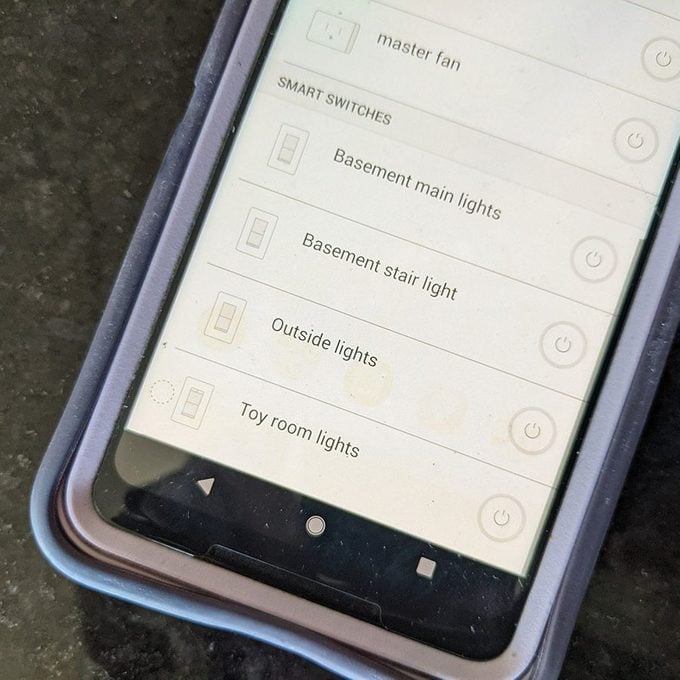
I definitely recommend the Kasa line of smart switches. The brand’s app is easy to understand and easy to use. Plus, if you have other smart products from its line, you can control them all with the same Kasa smart switch app.
Smart assistant integration makes the whole experience even cooler. The products are affordable, considering the many features, and the minimalist design integrates easily into almost any decor.
Snag your own Kasa smart switch at Amazon or Walmart for $40. It comes at a discounted rate if you buy two or three in a set, which I recommend going for anyway since you won’t be able to choose just one room to put this helpful gadget in.
 VIA MERCHANT
VIA MERCHANT
Your home is about to get much smarter, thanks to the Kasa smart switch, an easy-to-install light switch that responds to your commands.